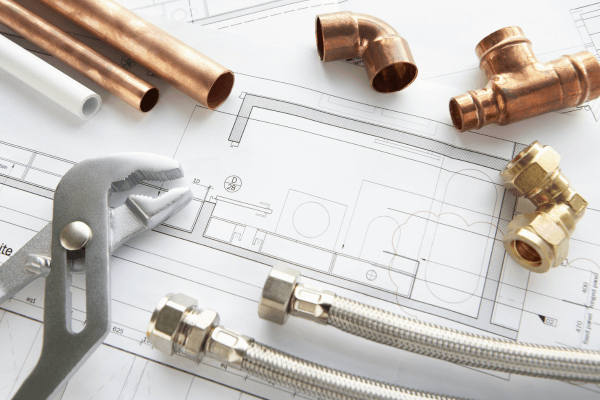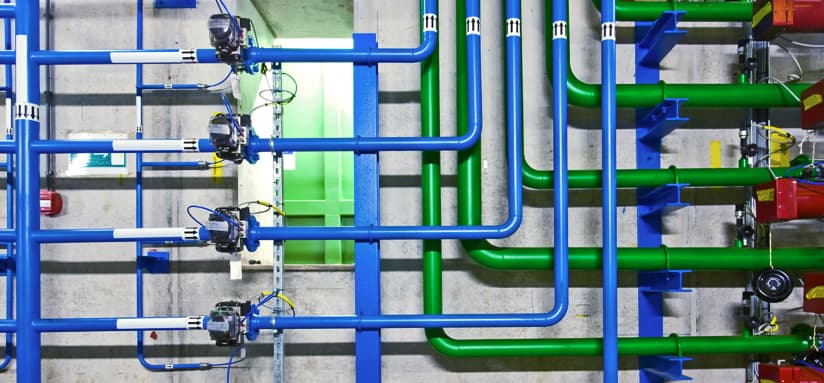Have you been trying to locate information and facts around Exploring Your Homes Plumbing Anatomy?

Understanding how your home's pipes system works is necessary for every property owner. From supplying clean water for drinking, food preparation, and bathing to securely eliminating wastewater, a well-maintained pipes system is important for your family members's wellness and comfort. In this thorough guide, we'll explore the detailed network that comprises your home's plumbing and offer tips on upkeep, upgrades, and handling typical concerns.
Introduction
Your home's pipes system is greater than simply a network of pipelines; it's a complex system that guarantees you have access to clean water and effective wastewater removal. Recognizing its elements and just how they collaborate can help you stop pricey repair work and ensure whatever runs efficiently.
Basic Elements of a Plumbing System
Pipelines and Tubing
At the heart of your pipes system are the pipes and tubes that carry water throughout your home. These can be made of numerous materials such as copper, PVC, or PEX, each with its benefits in terms of longevity and cost-effectiveness.
Fixtures: Sinks, Toilets, Showers, etc.
Components like sinks, commodes, showers, and tubs are where water is made use of in your home. Understanding just how these components attach to the pipes system assists in diagnosing problems and preparing upgrades.
Shutoffs and Shut-off Points
Shutoffs control the circulation of water in your pipes system. Shut-off valves are vital during emergency situations or when you require to make repairs, allowing you to isolate parts of the system without interfering with water flow to the entire home.
Water System
Main Water Line
The primary water line attaches your home to the community water system or a private well. It's where water enters your home and is distributed to numerous components.
Water Meter and Pressure Regulator
The water meter steps your water use, while a stress regulator guarantees that water flows at a risk-free stress throughout your home's pipes system, stopping damage to pipes and fixtures.
Cold Water vs. Warm water Lines
Recognizing the distinction between cold water lines, which supply water directly from the main, and warm water lines, which lug heated water from the water heater, assists in repairing and preparing for upgrades.
Drainage System
Drain Pipeline and Traps
Drain pipelines lug wastewater far from sinks, showers, and toilets to the sewer or septic system. Catches prevent drain gases from entering your home and also trap particles that can create obstructions.
Air flow Pipes
Ventilation pipes allow air into the drainage system, avoiding suction that might slow down drainage and cause catches to vacant. Correct air flow is essential for maintaining the integrity of your plumbing system.
Significance of Proper Drainage
Guaranteeing proper drainage prevents backups and water damage. Routinely cleaning drains and maintaining traps can protect against pricey fixings and prolong the life of your pipes system.
Water Heating Unit
Types of Water Heaters
Water heaters can be tankless or traditional tank-style. Tankless heaters warm water on demand, while containers keep heated water for immediate usage.
Exactly How Water Heaters Link to the Plumbing System
Understanding just how hot water heater link to both the cold water supply and warm water circulation lines helps in diagnosing issues like not enough hot water or leakages.
Upkeep Tips for Water Heaters
On a regular basis flushing your water heater to eliminate debris, examining the temperature level settings, and inspecting for leakages can extend its lifespan and boost power effectiveness.
Common Pipes Problems
Leaks and Their Reasons
Leakages can take place as a result of aging pipes, loosened fittings, or high water stress. Resolving leaks immediately prevents water damages and mold and mildew growth.
Blockages and Obstructions
Clogs in drains and commodes are often caused by purging non-flushable items or an accumulation of oil and hair. Using drainpipe displays and being mindful of what decreases your drains can protect against obstructions.
Signs of Plumbing Troubles to Watch For
Low tide stress, slow drains, foul odors, or abnormally high water bills are indications of possible plumbing issues that need to be resolved promptly.
Plumbing Upkeep Tips
Normal Evaluations and Checks
Arrange yearly plumbing evaluations to capture concerns early. Look for indications of leakages, deterioration, or mineral buildup in faucets and showerheads.
DIY Maintenance Tasks
Basic tasks like cleaning faucet aerators, checking for toilet leaks using dye tablet computers, or shielding exposed pipes in chilly environments can stop significant pipes issues.
When to Call a Specialist Plumbing Technician
Know when a pipes issue requires professional competence. Attempting complicated repair services without correct expertise can lead to more damage and higher repair costs.
Updating Your Pipes System
Factors for Updating
Updating to water-efficient fixtures or replacing old pipes can boost water top quality, minimize water expenses, and increase the value of your home.
Modern Pipes Technologies and Their Advantages
Check out technologies like smart leak detectors, water-saving toilets, and energy-efficient hot water heater that can conserve money and reduce ecological influence.
Expense Considerations and ROI
Compute the ahead of time expenses versus long-term financial savings when taking into consideration plumbing upgrades. Many upgrades spend for themselves with lowered utility bills and less repair services.
Environmental Influence and Preservation
Water-Saving Fixtures and Devices
Setting up low-flow faucets, showerheads, and toilets can substantially reduce water usage without sacrificing performance.
Tips for Lowering Water Use
Basic habits like taking care of leakages immediately, taking much shorter showers, and running full loads of washing and recipes can conserve water and lower your energy expenses.
Eco-Friendly Pipes Options
Consider lasting pipes materials like bamboo for flooring, which is durable and environmentally friendly, or recycled glass for counter tops.
Emergency Readiness
Actions to Take During a Pipes Emergency
Know where your shut-off valves lie and how to shut off the water supply in case of a ruptured pipeline or major leakage.
Importance of Having Emergency Calls Useful
Maintain call details for regional plumbers or emergency situation solutions readily available for fast reaction during a plumbing situation.
DIY Emergency Situation Fixes (When Relevant).
Temporary repairs like making use of air duct tape to spot a leaking pipe or putting a pail under a dripping faucet can decrease damages until an expert plumber shows up.
Final thought.
Comprehending the composition of your home's plumbing system equips you to keep it effectively, saving money and time on repair work. By complying with routine upkeep regimens and staying notified concerning modern pipes technologies, you can ensure your plumbing system runs successfully for many years ahead.
Exploring Your Homes Plumbing Anatomy
Water Supply System
Main Water Line: This is where water enters your home from the municipal supply or a private well.
Water Meter: Typically located near where the main water line enters the property, it measures the amount of water used.
Shutoff Valve: It s crucial to know where this is in case of emergencies. It allows you to turn off the water supply to the entire house.
Pipes and Fittings: These distribute water throughout your home. Materials can include copper, PVC, or PEX.
Drain-Waste-Vent (DWV) System
Drains: Located in sinks, showers, and tubs, these carry wastewater away.
Traps: U-shaped pipes under sinks that hold standing water, blocking sewer gases from entering the home.
Vents: Pipes that lead from the DWV system to the outside, preventing vacuum formation and allowing gases to escape.
Sewer Line: Carries all wastewater from the home to the municipal sewer system or a septic tank.
Fixtures and Appliances
Sinks, Toilets, and Showers
Dishwashers and Washing Machines
Water Heaters
Maintenance Tips
Regularly check for leaks in exposed pipes and around fixtures.
Inspect the water heater annually for signs of wear.
Clean drains and traps to prevent clogs and odors.
Know how to shut off water to individual fixtures.
When to Call a Professional
Major leaks or burst pipes
Installation of new pipes or fixtures
Septic tank issues
Remodeling projects that involve plumbing changes
Conclusion
Understanding the anatomy of your home's plumbing is key to maintaining a functional and efficient system. Regular checks and knowing when to call in the experts can save you time, money, and stress.
https://www.mavyn.com/blog/exploring-your-homes-plumbing-anatomy

Exploring Your Homes Plumbing Anatomy
Water Supply System
Drain-Waste-Vent (DWV) System
Fixtures and Appliances
Maintenance Tips
When to Call a Professional
Conclusion
Understanding the anatomy of your home's plumbing is key to maintaining a functional and efficient system. Regular checks and knowing when to call in the experts can save you time, money, and stress.
https://www.mavyn.com/blog/exploring-your-homes-plumbing-anatomy
I'm very interested in Exploring Your Homes Plumbing Anatomy and I'm hoping you enjoyed reading the new blog posting. Appreciated our blog? Please quickly share it. Help somebody else locate it. Many thanks for being here. Come back soon.
Book An Appointment